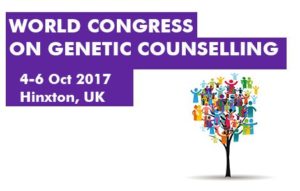| Title: | P14.042B – Clinical Application of a Facial Dysmorphology Tool: A Performance Analysis |
| Keywords: | Facial Dysmorphology Tool |
| Authors: | D. Lopergolo1, A. Currò1, A. M. Pinto1, C. Lo Rizzo1, M. Baldassarri1, G. Cevenini2, M. A. Mencarelli1, F. Mari1, A. Renieri1; 1Medical Genetics, Department of Medical Biotechnologies, University of Siena, Siena, Italy, 2Department of Medical Biotechnologies, University of Siena, Siena, Italy. |
| Abstract: | Diagnosis of genetic syndromes associated with facial dysmorphology in children is a real challenge. The rarer the syndrome, the harder reaching the diagnosis. Computer-aided dysmorphology analysis enables us to benefit from the cumulative knowledge of geneticists worldwide. Face2Gene (FDNA Inc. Boston, MA) is an analytic tool that utilizes the Facial Dysmorphology Novel Analysis technology to identify facial patterns associated with genetic syndromes by analyzing two-dimensional facial photos. For each case, Face2Gene provides a ranked list of up to 30 possible syndrome matches based on anthropometric measurements, phenotypic features, and frontal facial photos submitted. In this study, we aimed to measure the tool’s performance with patients followed at Clinical Genetics at the University of Siena. Frontal and often lateral pictures of 444 cases were uploaded, among which sixty cases with clinical and/or molecular diagnosis (syndromes diagnosed were 6% Nicolaides-Baraitser, 16% Rett, 10% Pitt-Hopkins, 6% Coffin-Siris, 6% Cohen, 6% Kabuki, 16% other). F2G matched correct diagnosis as the first hypothesis in 33,3%; as the first 5 hypotheses in 41,6%; as first 10 hypotheses in 46,6% of cases. Although these results do not prove the systematic efficacy of F2G tools usage in clinical practice, it should be taken into account that in some cases, picture quality and the lack of anthropometric measurements due to F2G updates could have affected the results of dysmorphology analysis. Therefore, although the F2G database still lacks some syndromes, we envision that in the future it can be improved to help clinicians reaching a diagnosis validating his idea about a clinical case. |
| Presentation Time: | Sunday, May 28, 2017, 4:45 PM – 5:45 PM |

FDNA and Face2Gene Featured at ESHG
A flock of researchers from around the globe shared their findings in dysmorphology and molecular genetics at this year’s ESHG as a part of FDNA’s corporate satellite talk and various scientific posters. Karin Weiss (Rambam Health Care Campus, Haifa, Israel) presented her further work on Sifrim Hitz Weiss Syndrome (SIHIWES), a recently described form […]


